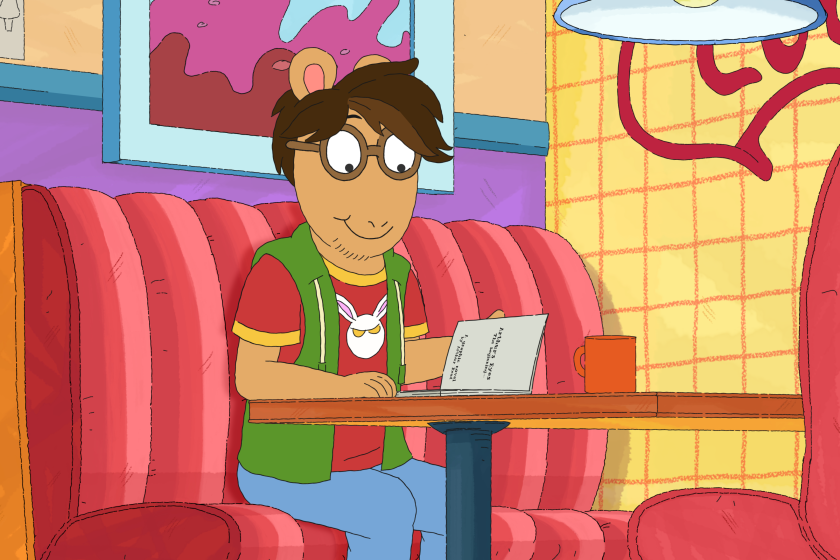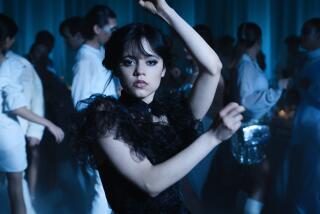How five ‘magic’ years turned an Aussie kids show into a global TV phenomenon
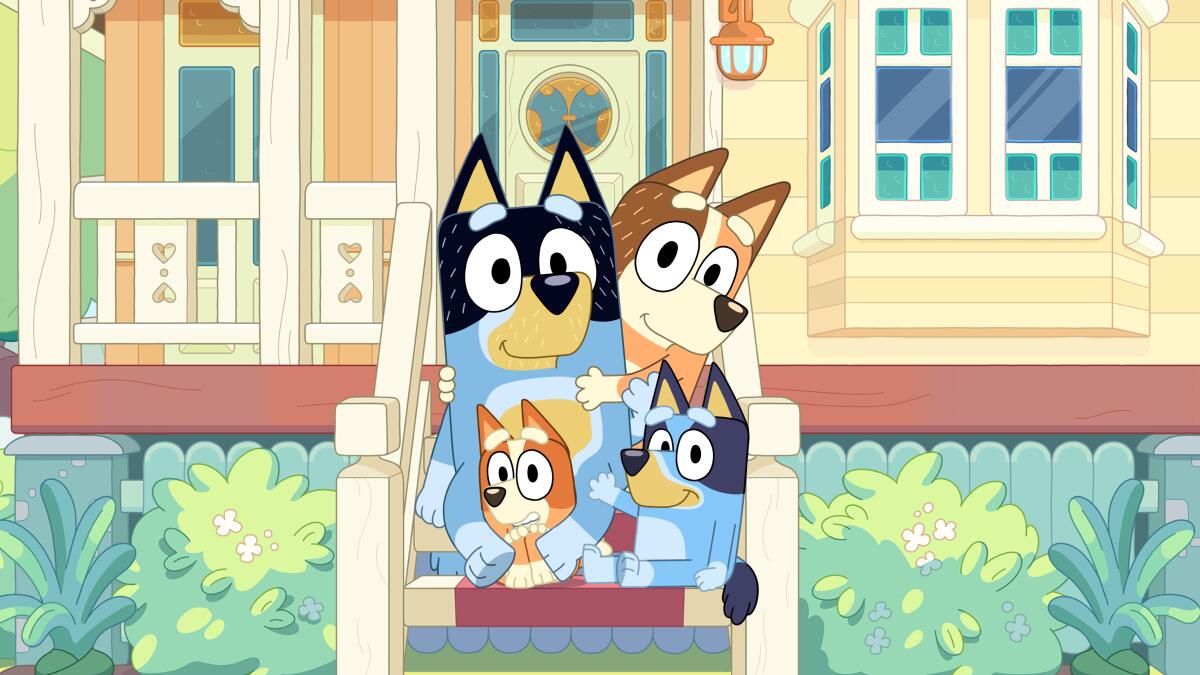
- Share via
What makes “Bluey” so special?
The beloved animated preschool show about a 6-year-old Blue Heeler dog named Bluey, her younger sister, Bingo, her mom, Chilli, and her dad, Bandit, returns for its much-anticipated third season Wednesday on Disney+.
After launching in Australia in 2018, “Bluey,” which is co-commissioned by the Australian Broadcasting Corp. and BBC Studios, premiered on Disney Junior in September 2019. Now there are “Bluey” toys and books. “Bluey’s Big Play,” a stage show, will begin its U.S. tour at Madison Square Garden on Nov. 18. Earlier this year, a life-size Airbnb of the Heeler home was meticulously created in Brisbane, Australia. (One lucky family even got to spend the night.) And Lin-Manuel Miranda and Natalie Portman both lend their voices to episodes in the new season.
“It’s just been a magic five years, really,” says “Bluey” creator Joe Brumm.
At once popular and critically acclaimed, “Bluey” is, arguably, the best kids’ show currently on television. But what exactly differentiates it from the litany of children’s programming now available to viewers? What is the secret sauce that makes “Bluey” exceptional?
When you pull back the curtain on the series’ inner workings, the answer becomes clear.
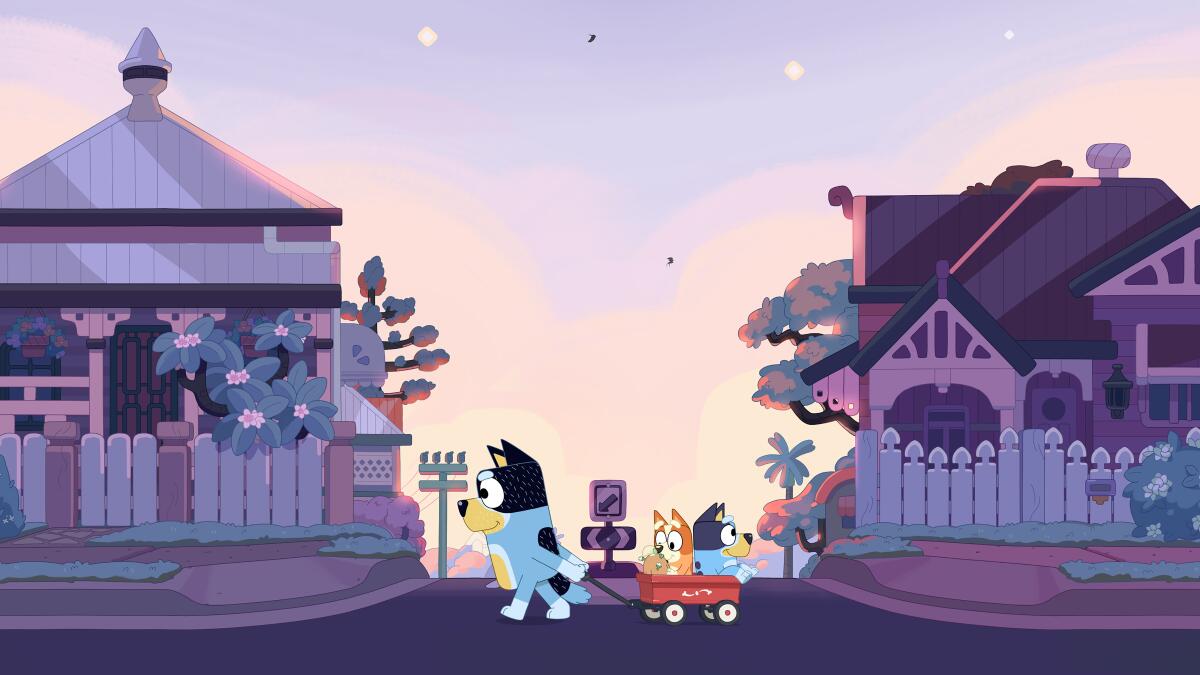
The studio culture
As production wrapped in April on the show’s third season, The Times received a virtual tour of Ludo Studio near Brisbane, where the show is produced from script to screen. The open-concept studio, which features exposed brick and high beam ceilings, is peppered with “Bluey” memorabilia. There’s the little red wagon featured in the Season 1 episode “Wagon Ride,” the watermelon rug from the Airbnb house (the rest was donated) and the original melodica used to compose the “Bluey” theme. The shelves are lined with the multiple awards (among them the International Emmy Award) and a gigantic production schedule (“a train that doesn’t stop,” says Daley Pearson, executive producer and co-founder of Ludo Studio) is pinned to the wall.
It’s representative of the warm working environment Brumm has cultivated on “Bluey,” inspired by his three years working previously on the British animated series “Charlie and Lola.” “It was this wonderful atmosphere,” he says. “Great people, great project, great place. I wanted to make a show that was good and successful and fun, but the main thing I wanted was that feeling back. This was about taking a new crop of animators and making them fall in love with being animators and making them understand they’ve chosen really wisely in their career. Because it’s a magic career.”
The majority of the Ludo staff has been with the show since its inception; many have been promoted as the series has progressed. “You’ve got to really give animators, the art directors, the designers room to create and to put their own sort of work into the show,” says director Richard Jeffery. “When you create that culture, amazing things happen. People can thrive that way.”
Getting bored of your favorite series? No need to rewatch them with so much great kids’ programming available to stream.
Each seven-minute episode of “Bluey” takes four months to produce. There are four revolving teams that work on an episode, with each team offset by one week. Every Friday, the entire “Bluey” team gets together to screen episodes that are at various levels of completion. Every 10 episodes, they have a milestone party, complete with themes like “superheroes,” “kings and queens” and “the ’80s.”
Lead animator Seb Powell, who heads up one of the four animation teams, says these screenings are “vitally important.” “As creative people, you need to see your end product. You need to see what you make and what your fellow teammates are making,” Powell says. “When you don’t have that, you feel like you’re on a conveyor belt.”
They all credit Brumm with setting the tone. “Joe is the most laid-back, unpretentious person I’ve ever met,” says Melanie Zanetti, who voices Chilli. “But at the same time, he’s very clear with his vision and he also demands excellence. I think when you are a team of people and you know you’re making something wonderful, that energy is infectious.”
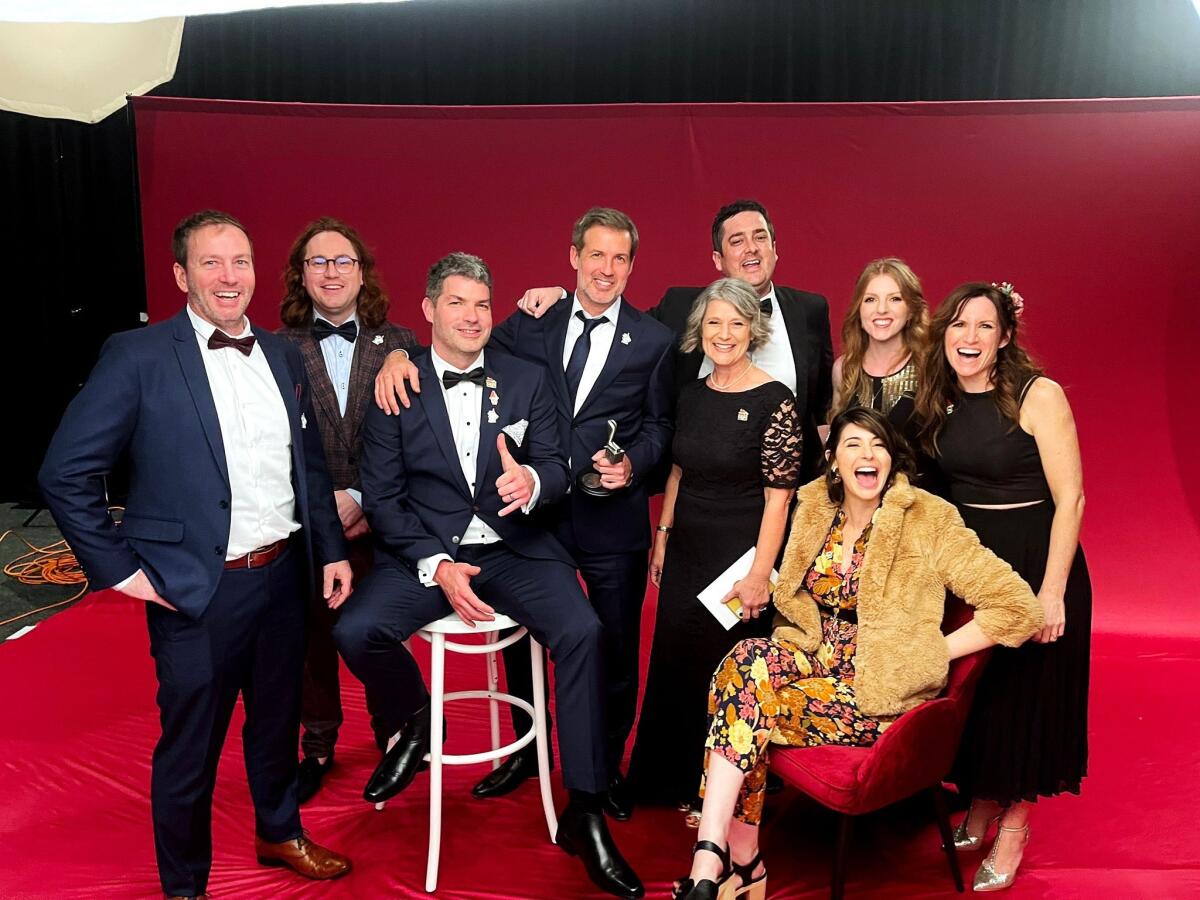
The writing
Neither saccharine nor sarcastic, the consistent tone of the show may be its biggest asset. “Every episode generally starts from something I’m noticing in my kids’ life or my wife and I’s life that just keeps coming up,” says Brumm, who writes every episode.
Typically an episode is centered around a game Bluey and Bingo are playing. “Play is a child’s first draft of life,” Pearson explains. “That’s where you learn responsibility and compromise and all that tough stuff and great stuff.”
Bandit and Chilli never seem to tire of playing with their children. Charlie Aspinwall, executive producer and co-founder of Ludo Studio, says the show is “the perfect representation of patient parenting.” “If you had a perfect world with as much time as you wanted, you might be able to parent this way,” he adds.
The show’s scenarios are intimately relatable. Perhaps the most beloved is the Season 2 episode called “Sleepytime,” which won a Prix Jeunesse International Award in June. In the episode, Bingo wants to do “a big girl” sleep, i.e. one where she stays in her own bed the whole night. In seven minutes, “Sleepytime” captures the musical beds that go on during the night, along with a wistfulness about growing up.
Surprisingly, Brumm name-checks the Dan Harmon comedy “Community” as one of his inspirations. “I just copied how he structured his story,” he says. “It’s interesting how you can condense that into seven minutes. Sometimes your plot points just need to be one shot.”
Critic’s notebook: In praise of children’s TV
Brumm counts the Season 2 episode “Bin Night,” where each week Bluey and Bingo help Bandit bring out the trash and recycling bins while talking about their lives, among his favorite episodes. “That was written like a musical score,” he says. “I think it sums up what ‘Bluey’ is about: the rhythms of life and how good it is for kids to have those rhythms, the small ones and the larger ones.”
“Bluey” also lets the parents make mistakes, says Zanetti. “They apologize for what they’ve done, and I just think that’s such incredible modeling,” she says. “To show that being vulnerable is actually how you strengthen bonds. I also love that you have Mom and Dad having equal amounts of domestic and emotional labor.” Bandit, for instance, is regularly shown doing the laundry or helping to make the bed.
The show never patronizes its young audience. “It doesn’t talk down to them. It doesn’t try to teach them things. They’re learning through the experience and play,” Aspinwall says. But he says you need “a little bit of grit in the oyster” to balance out the show’s inherent sweetness. So, for example, you see Bandit plunging the toilet and wondering “What are these kids eating?” in Season 1’s “Grannies.”
“’Bluey’ was just me rejecting a lot of other shows and forming a little fence around it,” Brumm says. “I don’t really care what’s been done before, because when I watch children’s TV, I want to switch it off for the most part. “

“Bluey” draws scenarios from intimately relatable experiences. Here Bluey tries to use her umbrella to dam the stream of rainwater.
The show’s look
With animation, everything is intentional — nothing just happens, Pearson explains. A lot goes into giving a show about cartoon dogs a sense of authenticity.
The show’s color palette, which producer Sam Moor describes as “a vibrant pastel,” captures the light in Australia. “I wanted ‘Bluey’ to be when you see it you go, ‘Hey that’s ‘Bluey,’” Brumm explains. “The main thing is that we have the blue and the orange of Bluey and Bingo. I think those two colors together kind of spread out into Australia.”
The series also boasts a special effects department. This makes the water splashing in “The Creek,” building blocks tumbling in “Daddy Robot” and the mud splattering in an upcoming Season 3 episode look real. “We do anything that adds sort of a realism to their world,” says animator Nicole Clowes. “We’re the topping of the show, the sauce on your sundae.”
After 25 seasons, the animated children’s program came to an end Monday with a glimpse of the characters as adults. Here’s how it came together.
The show’s sound
As the sound designer, Dan Brumm, Joe’s brother, creates the show’s soundscape. “This show is very naturalistic and it’s very organic,” he says. “I’m trying to make everything sound as real as possible so that kids and their parents are just kind of immersed in this world.”
No sound is manufactured. Brumm, who also voices the character Uncle Stripe, goes around Brisbane with his microphone to capture the distinct sounds of kids playing on a playground, sliding down a slide or swinging in a swing. For “Wagon Ride,” Brumm borrowed his brother’s little red wagon and recorded as he wheeled his two daughters around. “They make a pretty unmistakable noise,” he says. “I try to put myself and my family into the sounds that I create.”
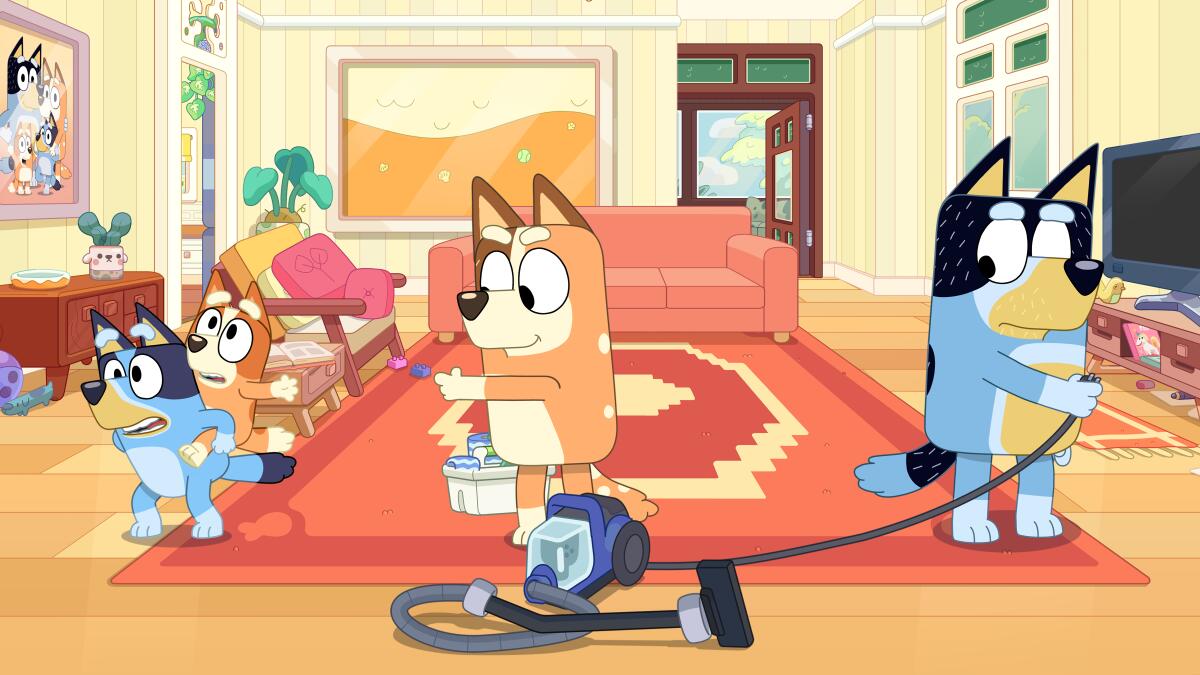
Composer Joff Bush scores every episode, rarely using the same music twice. “For a seven- minute episode we’ll talk for hours,” Bush says. “We talk about the mythology. We talk a lot about what those stories are about, which perspective we are going to come from with the characters. I probably spend more time on a seven-minute episode than I have when I’ve worked on an album. There is quite a lot of attention to detail.”
Bush, who voices Busker, is particularly interested in the musical dramaturgy of postwar Japanese cinema. “There’s a way to stop your readers,” he laughs. But he uses the same “character seeding” technique popular in that genre. So, for example, if they want to bring a little more emphasis to Chilli’s storyline in a certain episode they may seed a musical note played earlier in the episode. “One note could change the entire story,” he says.
All of this will be on display in the show’s eagerly awaited third season.
“The theme for the season is, ‘Please don’t let this be the season where everyone says that wasn’t as good as the previous season,’” Brumm laughs. “The theme, as always, is play, and how play can help kids become adults, helps them grow, bring a family together, lighten hardships … Ultimately that’s all that ‘Bluey’ is.”
More to Read
The complete guide to home viewing
Get Screen Gab for everything about the TV shows and streaming movies everyone’s talking about.
You may occasionally receive promotional content from the Los Angeles Times.
